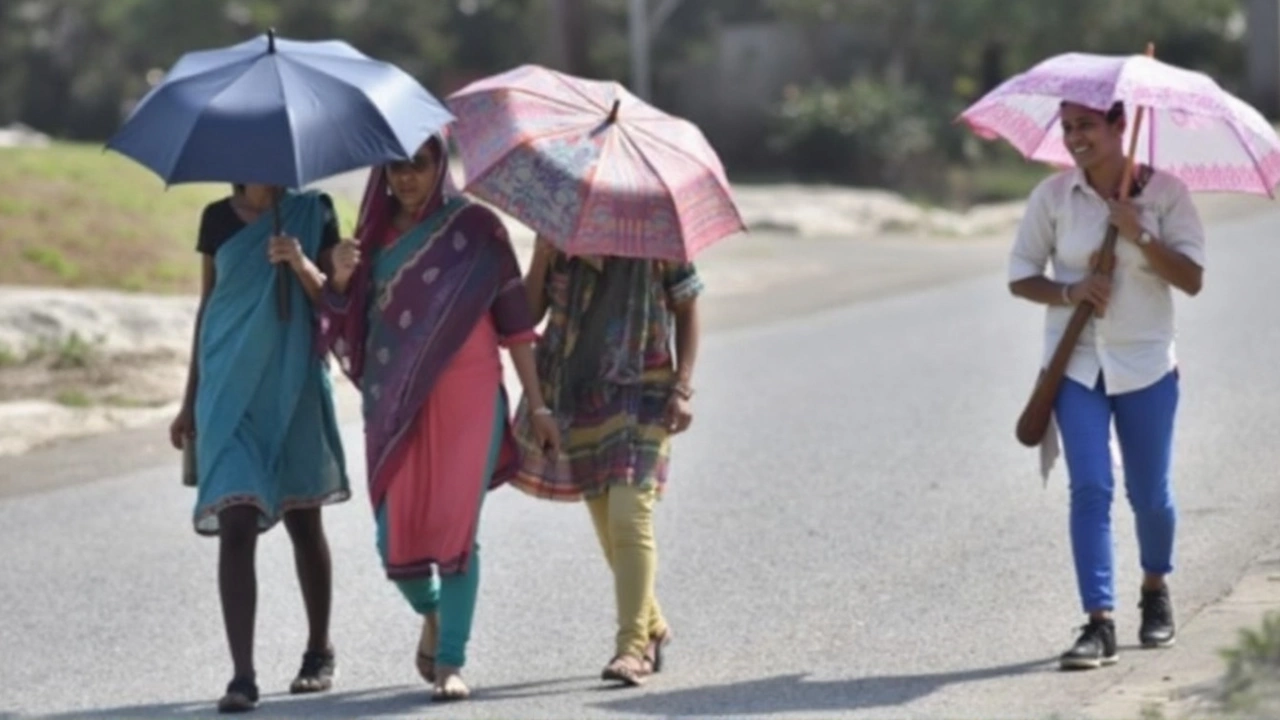
North India Sizzles as Red Alert Heatwave Intensifies
North India is sweltering under an intense heatwave, and the Indian Meteorological Department (IMD) isn't mincing words—they've put out a red alert for large parts of the region. Delhi, Rajasthan, Punjab, and Haryana are at the heart of this weather crisis, with other states like Gujarat and Uttar Pradesh also sweating it out. Temperatures are soaring, disrupting daily life and putting health at risk, while forecasters say the worst may still be ahead before any sign of relief appears.
Delhi's daytime highs are sticking stubbornly in the 40–42°C range, with nights barely dipping below 21°C. The mercury barely budged after sundown, making it tough for people to recover from the daytime heat. Over in Rajasthan, conditions are even more extreme. Phalodi clocked a jaw-dropping 49.8°C—the highest temperature recorded in India this season—while Delhi's Mungeshpur neighborhood wasn't far behind at 48.3°C. These aren't just numbers on a chart; they're life-threatening extremes, especially for anyone without access to steady power, water, or shelter.
According to Dr. Naresh Kumar, a senior forecaster with the IMD, these heatwave conditions are about to intensify further. The weather models point to another 4–5 days of scorching weather before any drop in temperature. Relief is expected only after light rainfall arrives over the Himalayas, which could bring a subtle dip in the unrelenting heat. Until then, urban and rural communities alike are stuck trying to cope.
Understanding the Red Alert and Staying Safe
This isn't just a hot spell—it's a sustained, hazardous heatwave event. The IMD issues a red alert when temperatures not only cross limits specific to the region but actually exceed them by 4–5°C for two straight days. That means both city dwellers and those in rural towns are facing temperatures well above what's considered safe, especially for vulnerable groups.
- Delhi: Daily highs of 40–42°C, with little relief at night.
- Rajasthan: Cities like Phalodi pushing past 49°C, setting new seasonal records.
- Gujarat and Haryana: Temperatures rising steadily, most regions at or above 44°C.
- Coastal areas: Even by the sea, the mercury is topping 37°C. That's a warning zone for coastal populations unaccustomed to severe inland heat.
- Hilly regions: Places that usually offer a break from the heat are also facing alerts—30°C or more, which is unusually high for hill stations.
Civic authorities are asking people to stay inside during the peak sun, especially from late morning through the afternoon. Hydration is now a public health necessity, not just a comfort. Kids, seniors, and those living or working outdoors are being advised to take extra care, as heatstroke and dehydration risks skyrocket at these temperatures. There are also reminders not to leave children or pets in parked vehicles, where temperatures can soar in minutes.
The IMD is quick to point out that, while the calendar says it's almost monsoon season, broad relief is still at least two days away for most. Scattered light rainfall may help briefly, but it’s not enough to cool large cities or heavily built-up areas. For now, north India is in the grips of a once-in-years heat event—one that’s putting infrastructure, health, and stamina to the test.